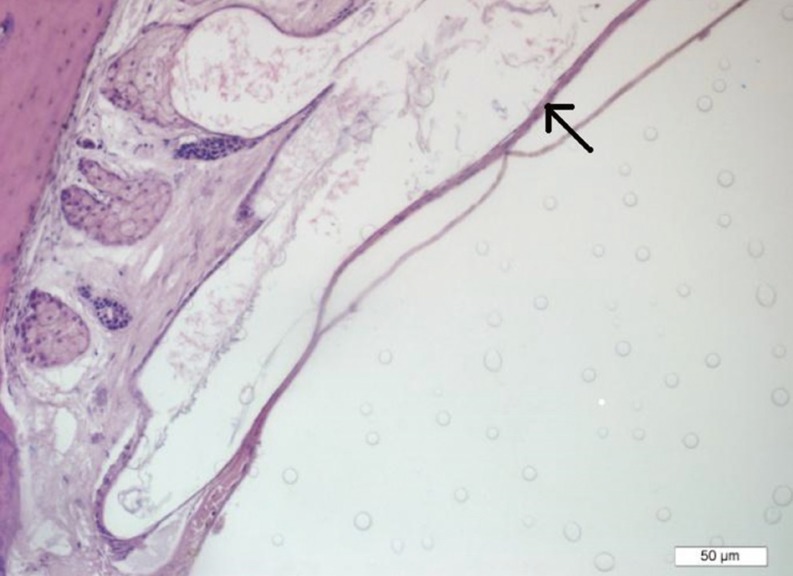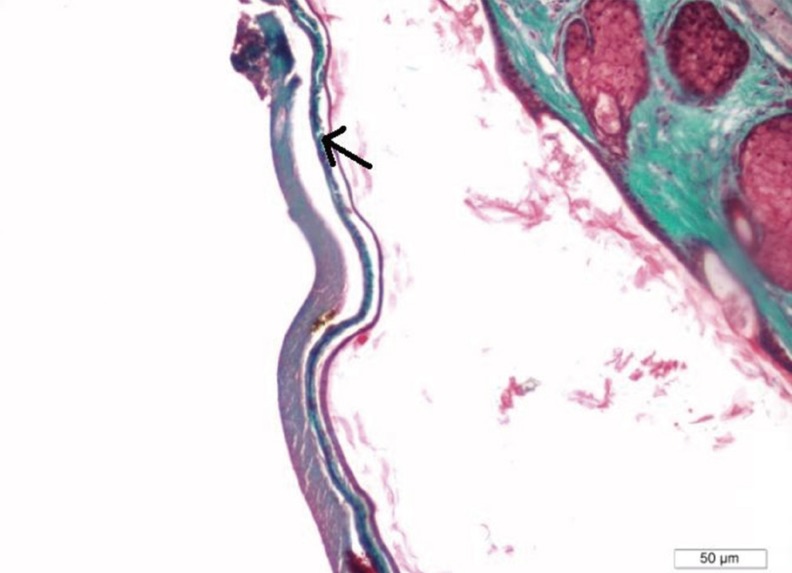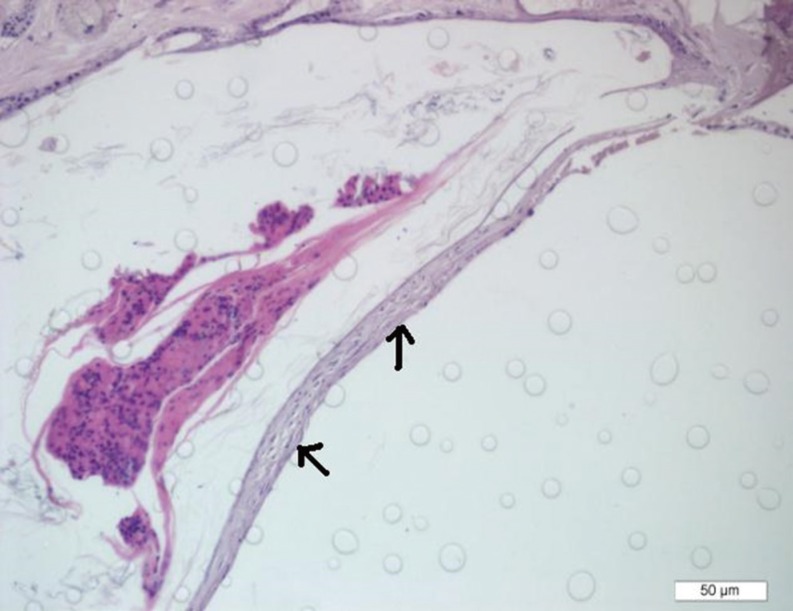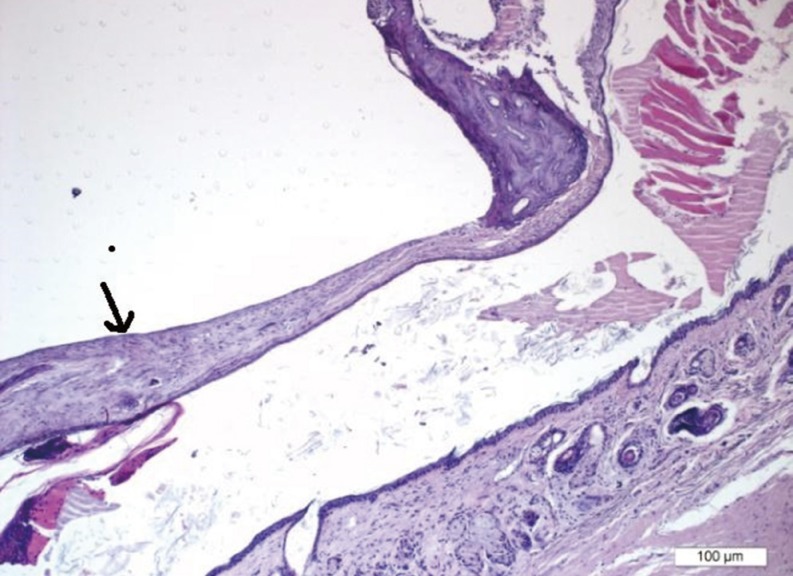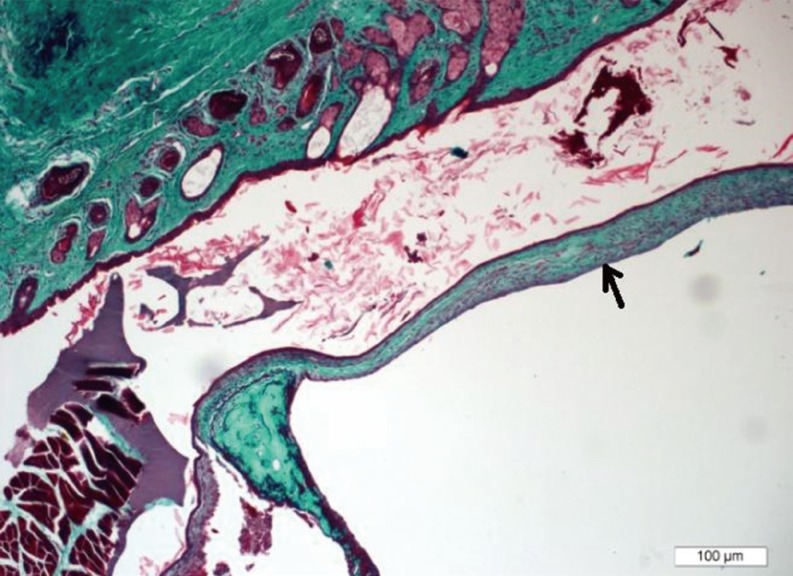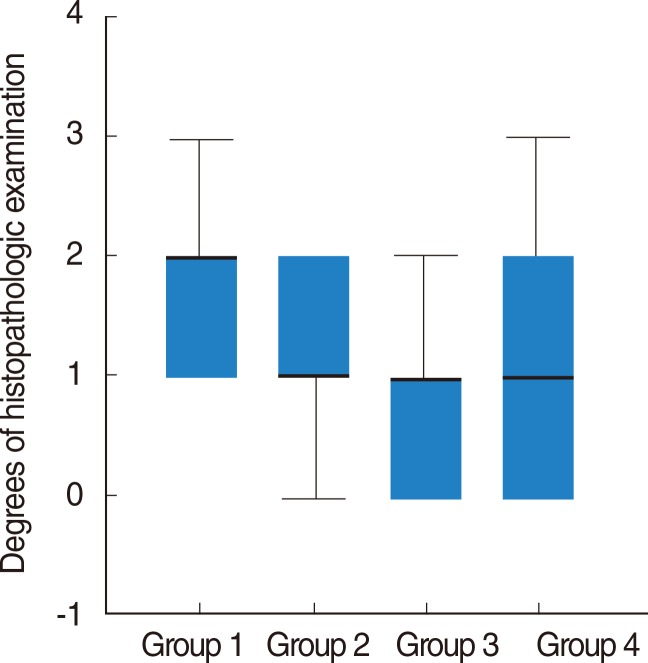Clin Exp Otorhinolaryngol.
2015 Mar;8(1):1-6. 10.3342/ceo.2015.8.1.1.
Do All Antioxidant Supplements Have the Same Potential Effect on Preventing Myringosclerosis?
- Affiliations
-
- 1Department of Otorhinolaryngology-Head and Neck Surgery, Ministry of Health, Etlik Ihtisas Training and Research Hospital, Ankara, Turkey.
- 2Department of Otorhinolaryngology-Head and Neck Surgery, Ministry of Health, Ankara Training and Research Hospital, Ankara, Turkey. arzualanya@yahoo.com
- 3Department of Pathology, Ministry of Health, Etlik Ihtisas Training and Research Hospital, Ankara, Turkey.
- 4Department of Otorhinolaryngology-Head and Neck Surgery, Konya Medicana International Hospital, Konya, Turkey.
- KMID: 1973480
- DOI: http://doi.org/10.3342/ceo.2015.8.1.1
Abstract
OBJECTIVES
Myringosclerosis is an irreversible pathological healing mechanism of the tympanic membrane which can result in the formation of sclerotic plaques. Antioxidant treatment is a recognised prevention therapy and coenzyme Q10 (CoQ10), lycopene, and grape seed extract (GSE), were used in this manner.
METHODS
Forty-four Wistar rats were used in this experiment, and, following myringotomies, the animals were randomly divided into four groups. CoQ10, lycopene or GSE was administered orally to the respective groups, starting from the day of surgery. Otomicroscopy examination was performed on the 14th day. All tympanic membrane lesions were evaluated and compared otomicroscopically and histopathologically.
RESULTS
The otomicroscopy and histopathological findings, compared against a control (saline) group, showed the CoQ10, lycopene, and GSE groups had statistically significant differences of degree of sclerosis (P<0.001).
CONCLUSION
CoQ10, lycopene, and GSE were compared against a saline group and their antioxidative and anti-inflammatory effects were similar. The formation of myringosclerotic plagues after experimental myringotomy in rats significantly decreased and diminished after systemic administration of the three different antioxidant supplements.
MeSH Terms
Figure
Cited by 1 articles
-
Analysis of Risk Factors for Myringosclerosis Formation after Ventilation Tube Insertion
Eung Hyub Kim, Ki Wan Park, Seung Hun Lee, Bong Jik Kim, Yong-Ho Park
J Korean Med Sci. 2020;35(13):e83. doi: 10.3346/jkms.2020.35.e83.
Reference
-
1. Mattsson C, Magnuson K, Hellstrom S. Myringosclerosis caused by increased oxygen concentration in traumatized tympanic membranes. Experimental study. Ann Otol Rhinol Laryngol. 1995; 8. 104(8):625–632. PMID: 7639472.
Article2. Ho KY, Tsai SM, Chai CY, Wang HM. Clinical analysis of intratympanic tympanosclerosis: etiology, ossicular chain findings, and hearing results of surgery. Acta Otolaryngol. 2010; 3. 130(3):370–374. PMID: 19685361.
Article3. Kazikdas KC, Uguz MZ, Erbil G, Tugyan K, Yilmaz O, Guneli E, et al. The anti-oxidant effect of alpha-tocopherol in the prevention of experimentally induced myringosclerosis. Otol Neurotol. 2006; 9. 27(6):882–886. PMID: 16788415.
Article4. Ozcan C, Gorur K, Cinel L, Talas DU, Unal M, Cinel I. The inhibitory effect of topical N-acetylcysteine application on myringosclerosis in perforated rat tympanic membrane. Int J Pediatr Otorhinolaryngol. 2002; 5. 63(3):179–184. PMID: 11997152.5. Polat S, Ozturk O, Uneri C, Yuksel M, Haklar G, Bozkurt S, et al. Determination of reactive oxygen species in myringotomized tympanic membranes: effect of vitamin e treatment. Laryngoscope. 2004; 4. 114(4):720–725. PMID: 15064630.
Article6. Spratley JE, Hellstrom SO, Mattsson CK, Pais-Clemente M. Topical ascorbic acid reduces myringosclerosis in perforated tympanic membranes. A study in the rat. Ann Otol Rhinol Laryngol. 2001; 6. 110(6):585–591. PMID: 11407852.
Article7. Emir H, Kaptan ZK, Samim E, Sungu N, Ceylan K, Ustun H. The preventive effect of ginkgo biloba extract in myringosclerosis: study in rats. Otolaryngol Head Neck Surg. 2009; 2. 140(2):171–176. PMID: 19201283.
Article8. Uneri C, Baglam T, Yazici M. The effect of vitamin E treatment on the development of myringosclerosis after ventilation tube insertion. Int J Pediatr Otorhinolaryngol. 2006; 6. 70(6):1045–1048. PMID: 16368152.
Article9. Bentinger M, Brismar K, Dallner G. The antioxidant role of coenzyme Q. Mitochondrion. 2007; 6. 7(Suppl):S41–S50. PMID: 17482888.
Article10. Beyer RE. An analysis of the role of coenzyme Q in free radical generation and as an antioxidant. Biochem Cell Biol. 1992; 6. 70(6):390–403. PMID: 1333230.
Article11. Mordente A, Guantario B, Meucci E, Silvestrini A, Lombardi E, Martorana GE, et al. Lycopene and cardiovascular diseases: an update. Curr Med Chem. 2011; 18(8):1146–1163. PMID: 21291369.
Article12. Bignotto L, Rocha J, Sepodes B, Eduardo-Figueira M, Pinto R, Chaud M, et al. Anti-inflammatory effect of lycopene on carrageenan-induced paw oedema and hepatic ischaemia-reperfusion in the rat. Br J Nutr. 2009; 7. 102(1):126–133. PMID: 19203414.
Article13. Reifen R, Nissenkorn A, Matas Z, Bujanover Y. 5-ASA and lycopene decrease the oxidative stress and inflammation induced by iron in rats with colitis. J Gastroenterol. 2004; 6. 39(6):514–519. PMID: 15235867.
Article14. Bagchi D, Garg A, Krohn RL, Bagchi M, Tran MX, Stohs SJ. Oxygen free radical scavenging abilities of vitamins C and E, and a grape seed proanthocyanidin extract in vitro. Res Commun Mol Pathol Pharmacol. 1997; 2. 95(2):179–189. PMID: 9090754.15. Ray S, Bagchi D, Lim PM, Bagchi M, Gross SM, Kothari SC, et al. Acute and long-term safety evaluation of a novel IH636 grape seed proanthocyanidin extract. Res Commun Mol Pathol Pharmacol. 2001; Mar-Apr. 109(3-4):165–197. PMID: 11758648.16. Bhaya MH, Schachern PA, Morizono T, Paparella MM. Pathogenesis of tympanosclerosis. Otolaryngol Head Neck Surg. 1993; 9. 109(3 Pt 1):413–420. PMID: 8414556.
Article17. Mattsson C, Marklund SL, Hellstrom S. Application of oxygen free radical scavengers to diminish the occurrence of myringosclerosis. Ann Otol Rhinol Laryngol. 1997; 6. 106(6):513–518. PMID: 9199613.
Article18. Song JJ, Lim HW, Kim K, Kim KM, Cho S, Chae SW. Effect of caffeic acid phenethyl ester (CAPE) on H2O2 induced oxidative and inflammatory responses in human middle ear epithelial cells. Int J Pediatr Otorhinolaryngol. 2012; 5. 76(5):675–679. PMID: 22370236.19. Gorur K, Ozcan C, Polat A, Unal M, Tamer L, Cinel I. The anti-oxidant and anti-apoptotic activities of selenium in the prevention of myringosclerosis in rats. J Laryngol Otol. 2002; 6. 116(6):426–429. PMID: 12385352.20. Jayaprakasha GK, Selvi T, Sakariah KK. Antibacterial and antioxidant activities of grape (Vitis vinifera) seed extracts. Food Res Int. 2003; 36(2):117–122.
Article
- Full Text Links
- Actions
-
Cited
- CITED
-
- Close
- Share
- Similar articles
-
- Effects of Vitamin and Antioxidant Supplements in Prevention of Bladder Cancer: a Meta-Analysis of Randomized Controlled Trials
- Analysis of Risk Factors for Myringosclerosis Formation after Ventilation Tube Insertion
- Use of Dietary Supplements in Presurgical Patients
- Dietary Supplements and Postoperative Bleeding
- Reversible Lesion in the Splenium of the Corpus Callosum due to Thermogenic Dietary Supplements

